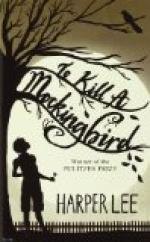|
This section contains 956 words (approx. 4 pages at 300 words per page) |

|
Discrimination in to Kill a Mockingbird
Summary: Harper Lee uses different rhetorical devices in To Kill a Mockingbird to show that discrimination is wrong. By comparing the black and white races throughout her novel with parallelism, she shows how much they both have in common and demonstrates that discrimination is unfair because of these similarities.
Throughout the 60's, discrimination was a big deal in the United States. We almost risked our independence because of the issues of discrimination and slavery, and even fought a war over these concepts. Harper Lee uses different rhetorical devices to convey her own attitude toward discrimination in To Kill a Mockingbird through her characterization of Scout, a young girl who is carefree and naive in the beginning of the novel, but toward the end is more understanding and thankful to be brought up well in a family that did not accept or allow discrimination in the household. Scout didn't understand why people's skin color should make a difference in the way they should be treated, which is Lee's exact feeling on the subject. Harper Lee uses literary devices such as parallelism, similes, and passive voice to emphasize her belief that discrimination should not be tolerated.
Harper Lee opts...
|
This section contains 956 words (approx. 4 pages at 300 words per page) |

|


